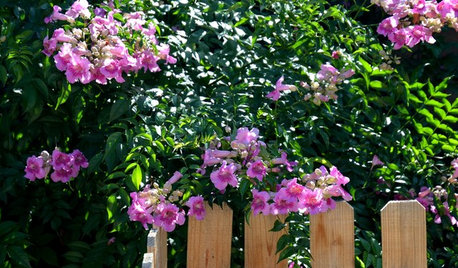Kudzu bugs
Tiffany, purpleinopp Z8b Opp, AL
10 years ago
Related Stories

DECORATING GUIDES12 Ways to Cool Your Home Without Air Conditioning
If your summer energy bill is leaving you hot under the collar, consider these savvy alternate strategies for cooling down
Full Story
GARDENING GUIDESLessons in the Rewards of Selfless Gardening
Let go of gardening for your own vision and watch the garden’s own true vision come forth
Full Story
EDIBLE GARDENSNatural Ways to Get Rid of Weeds in Your Garden
Use these techniques to help prevent the spread of weeds and to learn about your soil
Full Story
GROUND COVERSGive Your Lawn a Taste of the Wild
Consider the joys of an irregularly trimmed meadow lawn: It’s ecofriendly, visually interesting and still good for romping
Full Story
DECORATING GUIDESFrom Queasy Colors to Killer Tables: Your Worst Decorating Mistakes
Houzzers spill the beans about buying blunders, painting problems and DIY disasters
Full Story
GARDENING GUIDESGet on a Composting Kick (Hello, Free Fertilizer!)
Quit shelling out for pricey substitutes that aren’t even as good. Here’s how to give your soil the best while lightening your trash load
Full Story
GARDENING GUIDES10 Top Native Plants for the U.S. Southeast
For a low-maintenance and wildlife-friendly landscape, use Southern natives that withstand heat and humidity
Full Story
GARDENING GUIDES10 Top Native Plants for Northern California Gardens
Enjoy a fuss-free, water-wise garden by growing plants naturally in tune with the climate and wildlife of Northern California
Full Story
PINK FLOWERSGreat Design Plant: Pink Trumpet Vine Heralds Vibrant Color
Announce your landscape beautification efforts with this flowering vine that perks up hot, dry gardens
Full Story
GARDENING GUIDESGreat Design Plant: Milkweed
Quit cringing. This not-weed plant is a sight to behold in the garden, has a delicious vanilla scent and is a magnet for butterflies
Full Story









Starlight Botanist
plantomaniac08
Related Professionals
Foothill Ranch Landscape Architects & Landscape Designers · Manorville Landscape Architects & Landscape Designers · Prairie Ridge Landscape Architects & Landscape Designers · Newcastle Landscape Architects & Landscape Designers · Anderson Landscape Contractors · Concord Landscape Contractors · New Brighton Landscape Contractors · San Carlos Park Landscape Contractors · Southbury Landscape Contractors · Streamwood Landscape Contractors · Welby Landscape Contractors · West Orange Landscape Contractors · Crestview Interior Designers & Decorators · Garden City Interior Designers & Decorators · Lomita Interior Designers & DecoratorsTiffany, purpleinopp Z8b Opp, ALOriginal Author
plantomaniac08
Tiffany, purpleinopp Z8b Opp, ALOriginal Author
plantomaniac08
plantomaniac08
goren
Tiffany, purpleinopp Z8b Opp, ALOriginal Author